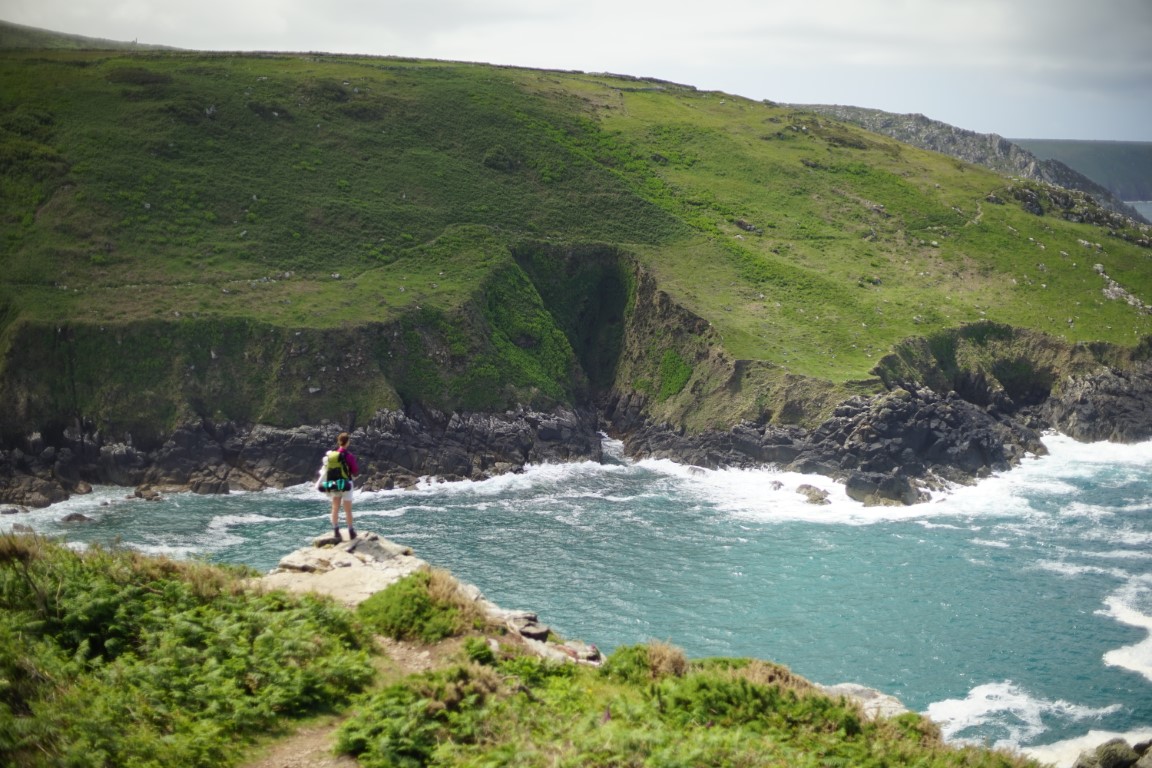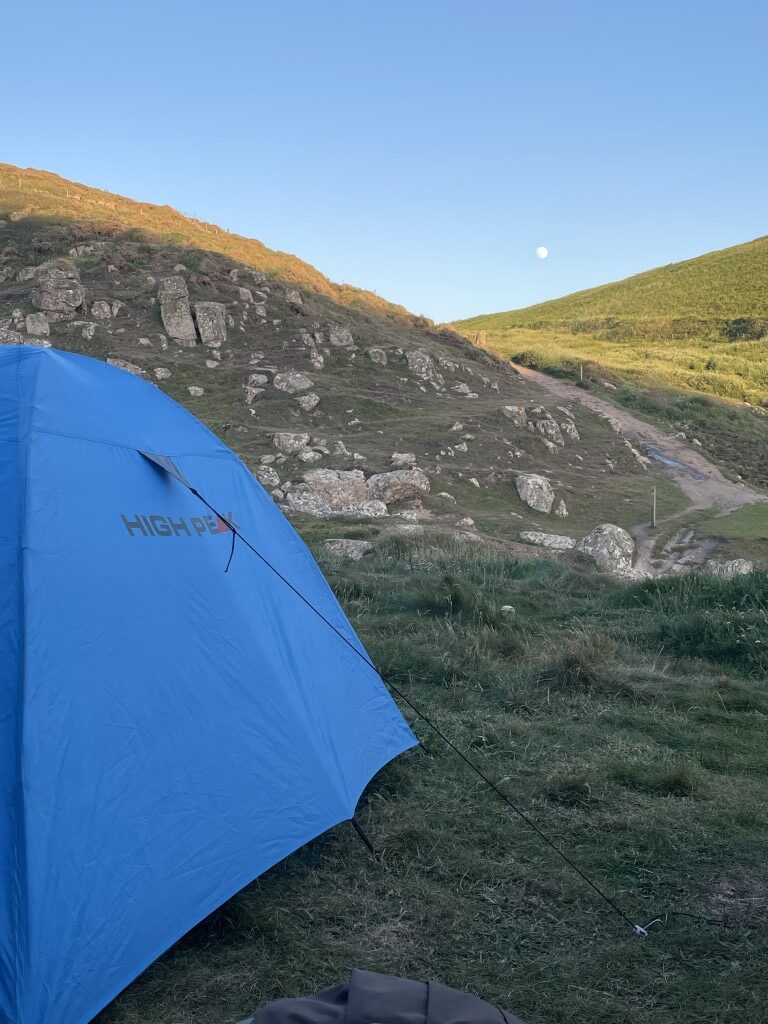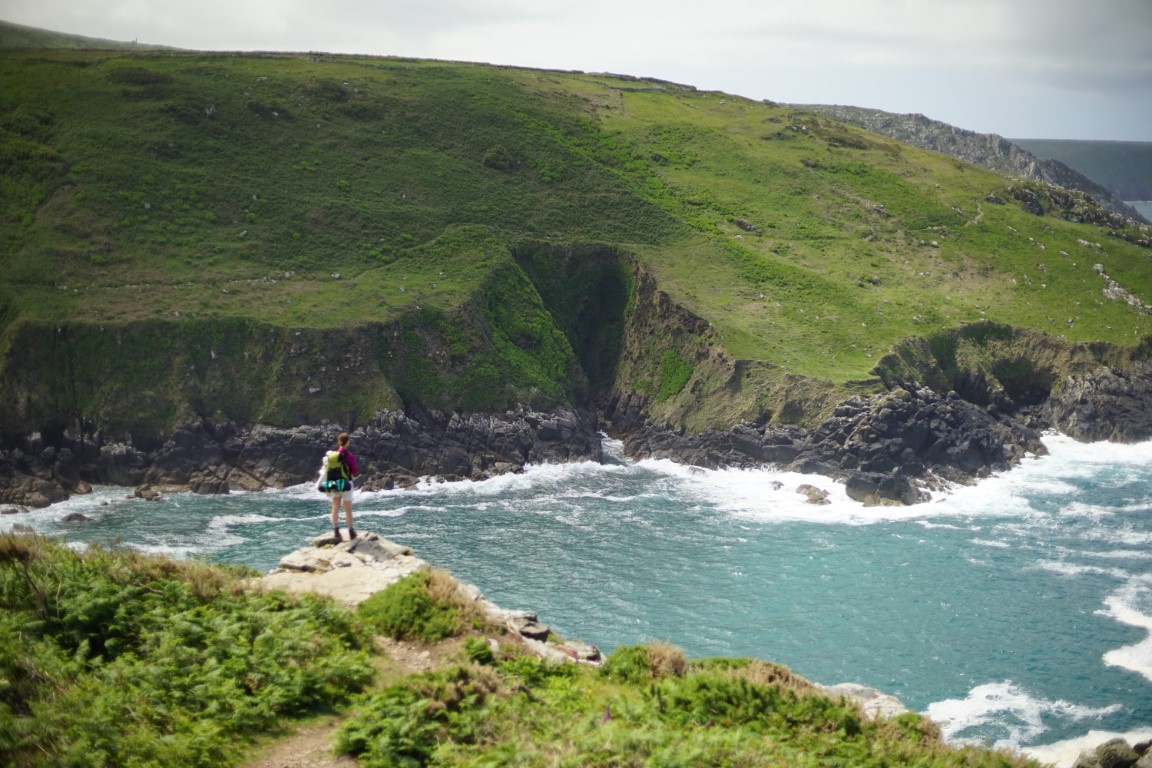The weight of the backpack presses on my back, my legs ache from the kilometers I have already walked. While we encountered a few hikers at the beginning, we are now all alone. In front of us the vastness of the ocean, behind us the path winding its way up the cliff. We set up our tent, the wind blows cool in my face. We are so close to Mother Earth, there is only the sunset and us. Breathe in, breathe out, perceive this special atmosphere.
Join us on an incredible, challenging journey where you will not only experience the breathtaking beauty of the Cornish coast, but also embark on a special journey to yourself.
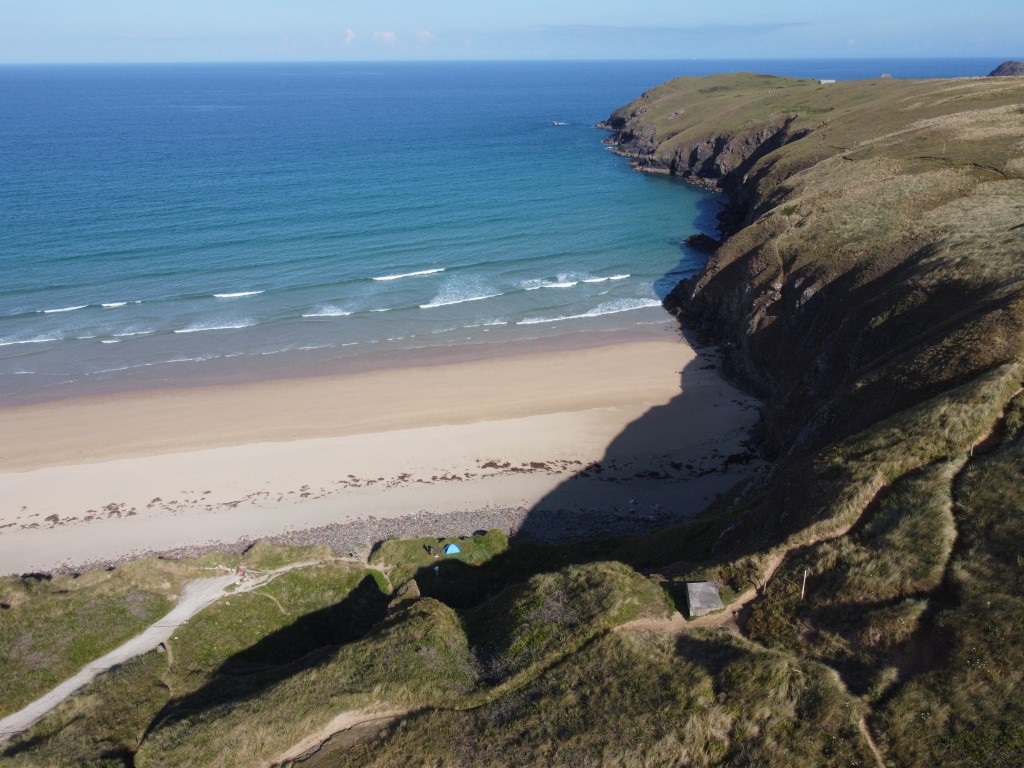
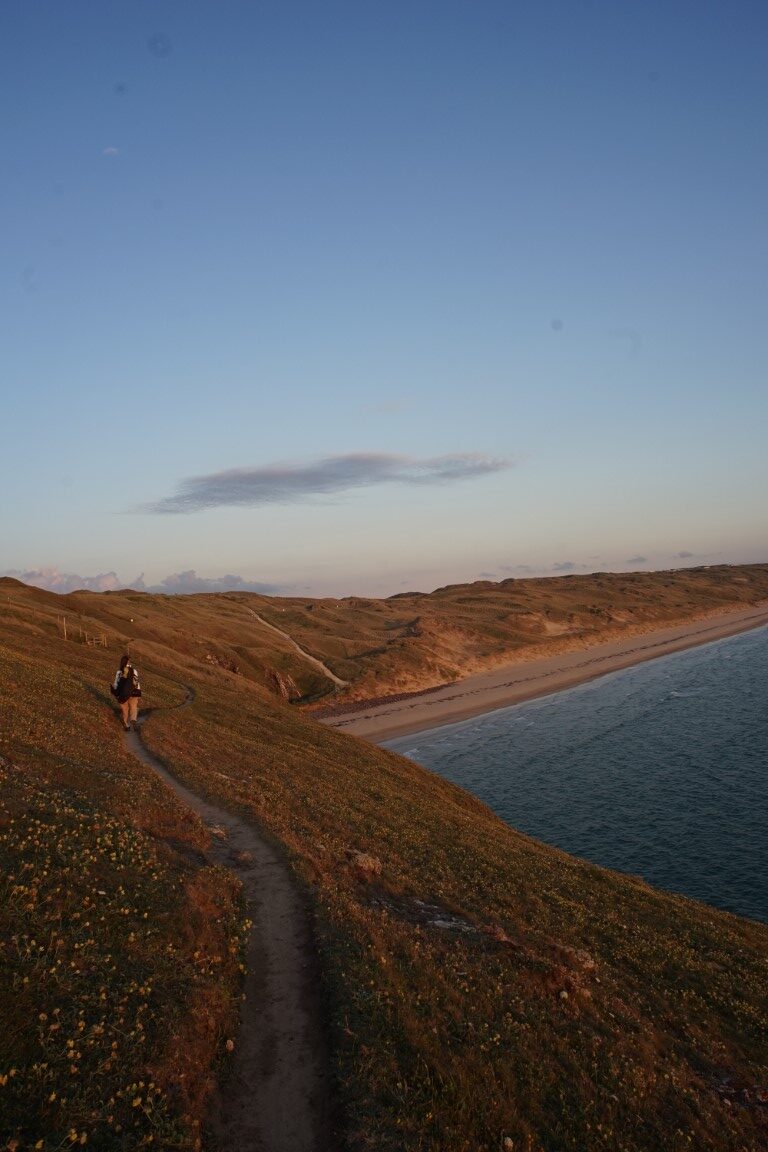

Why Cornwall? Why the South West Coast Path?
Stretching along the entire coastline of Cornwall and extending into Devon and Somerset, the South West Coast Path holds the distinction of being England’s longest continuous footpath. Covering a challenging yet rewarding total distance of 1,014 km, it is designated as one of the UK’s National Trails and is under the careful management and maintenance of the South West Coast Path Association. Hikers embarking on this trail are treated to a rich variety of landscapes, encompassing towering cliffs, secluded coves, sandy beaches, rugged headlands, and charming coastal villages.
As an integral part of the UNESCO-listed Jurassic Coast, the path is celebrated for its geological significance and fossil-rich cliffs. Nature enthusiasts exploring the South West Coast Path can relish opportunities to encounter diverse wildlife, with habitats supporting various bird species and marine life. The presence of wildflowers enhances the path’s intrinsic natural beauty. We were lucky enough to see seals several times, swimming and playing in the water or relaxing in the sun.
In addition to its scenic wonders, the path offers a journey through time, with hikers stumbling upon numerous historical sites. These include ancient castles, lighthouses, and remnants of mining activities that echo Cornwall’s industrial past. Whether challenging oneself with the trek’s physical demands or immersing in its cultural and natural marvels, the South West Coast Path promises an unforgettable adventure along the southwestern edge of England
Best time to travel
In theory, the Southwest Coast Path is accessible throughout the year. Our preference for wild camping ruled out winter due to the cold temperatures. Opting for an early June trek turned out to be a delightful choice, and I would gladly repeat it. Daytime temperatures were pleasantly warm, with the sun casting its considerable strength (remember to apply sunscreen). While the weather was generally more stable, occasional rain showers were still to be anticipated. Additionally, it’s essential to note that temperatures cool down at night. This is especially relevant for campers who should ensure their sleeping bags provide sufficient warmth and pack warm clothing for the evenings.
Compared to the peak summer season, there were fewer people on the trail, yet most accommodations and restaurants were already operational. Brave souls might even consider a refreshing plunge into the sea, although it remains quite chilly. The flourishing flora and fauna, especially the vibrant poppy fields, added an exquisite touch to the natural spectacle.
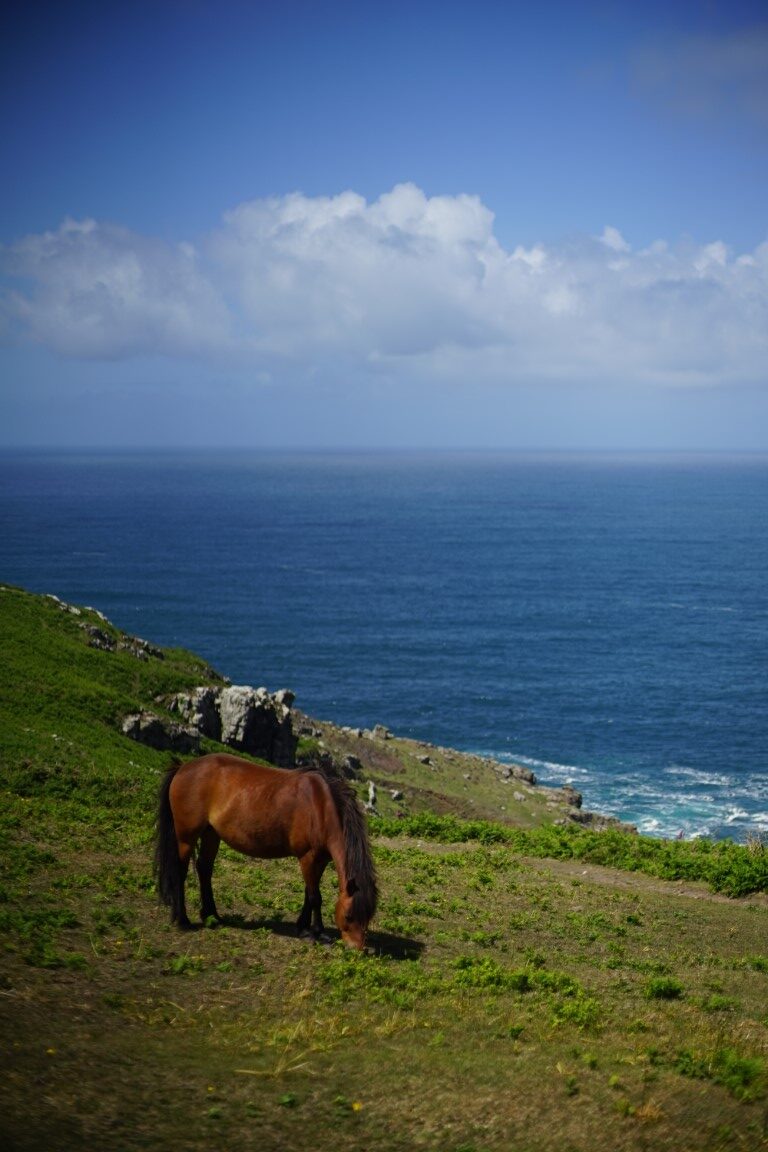


Accomodation
Accommodations along the South West Coast Path (SWCP) are diverse, catering to various preferences and budgets. In larger towns and tourist hotspots, you’ll find hotels and inns ranging from budget to luxury. Bed and Breakfasts (B&Bs) are popular, offering an intimate experience with homemade breakfast, advance booking is advisable especially during summer. Guesthouses, akin to B&Bs but often family-run, dot the trail, providing a cozy retreat.Hostels, appealing to budget-conscious backpackers, can be independent or part of larger networks and can be found on the way. Camping is permitted in certain SWCP sections, with designated campsites, however, it’s crucial to check restrictions, as wild camping may be limited in specific areas. Campgrounds vary in amenities, from basic facilities to more comprehensive options and can be found along the way. We had to bock an accomodation twice during our travels and decided to stay in Airbnbs. We didnt have any problem booking on short notice.
Wild camping
Wild camping is not explicitly prohibited in England, but this doesn’t imply automatic permission either. Given that a significant portion of the land is privately owned, it is advisable to seek permission from the landowner before setting up camp to ensure compliance. If you’re inclined to engage in wild camping, there are plenty of picturesque spots available along your route. It’s crucial, however, to scout for a suitable location well in advance to avoid being caught by darkness. Additionally, adhere to certain guidelines:
- Leave no trace; pack out all waste
- Follow fire regulations and keep fires small
- Respect wildlife and minimize disturbance
- Respect private property boundaries
- Set up your tent later in the evening and depart early in the morning
Throughout our hike, we encountered no issues despite frequently engaging in wild camping. The local residents proved exceptionally friendly, extending their kindness by permitting us to sleep in their fields when we struggled to find a suitable spot and fell behind schedule. Occasionally, while passing through villages and shopping for groceries, we took advantage of camping sites, seeking permission to use their showers, for which we were graciously allowed for a small fee.
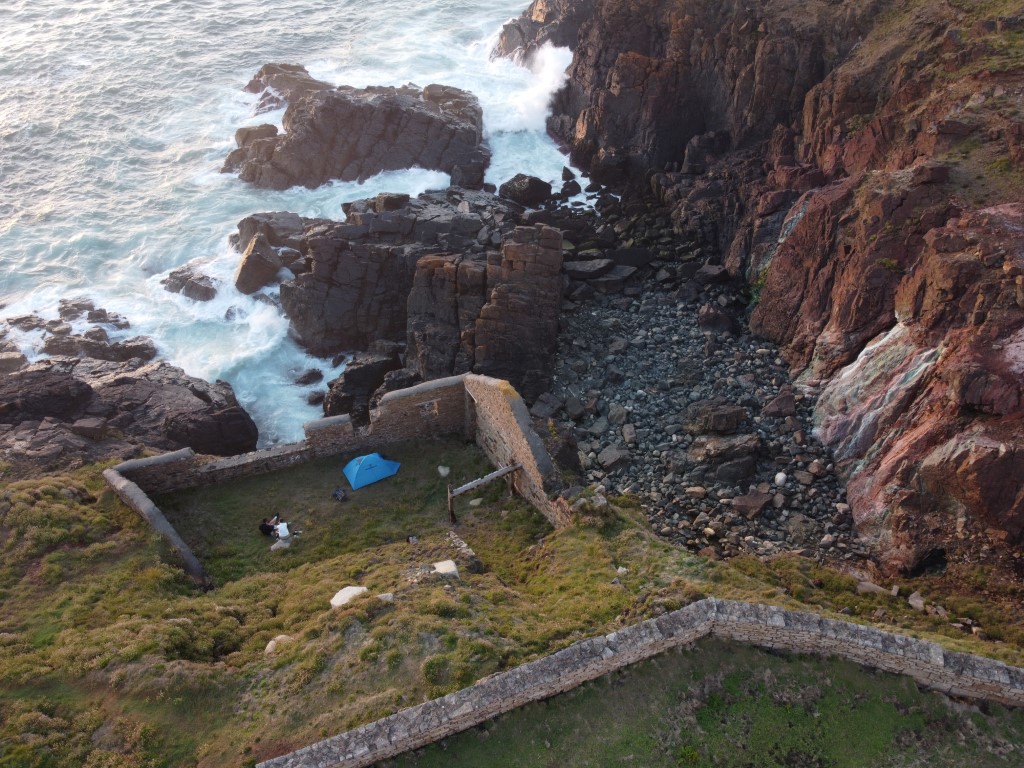
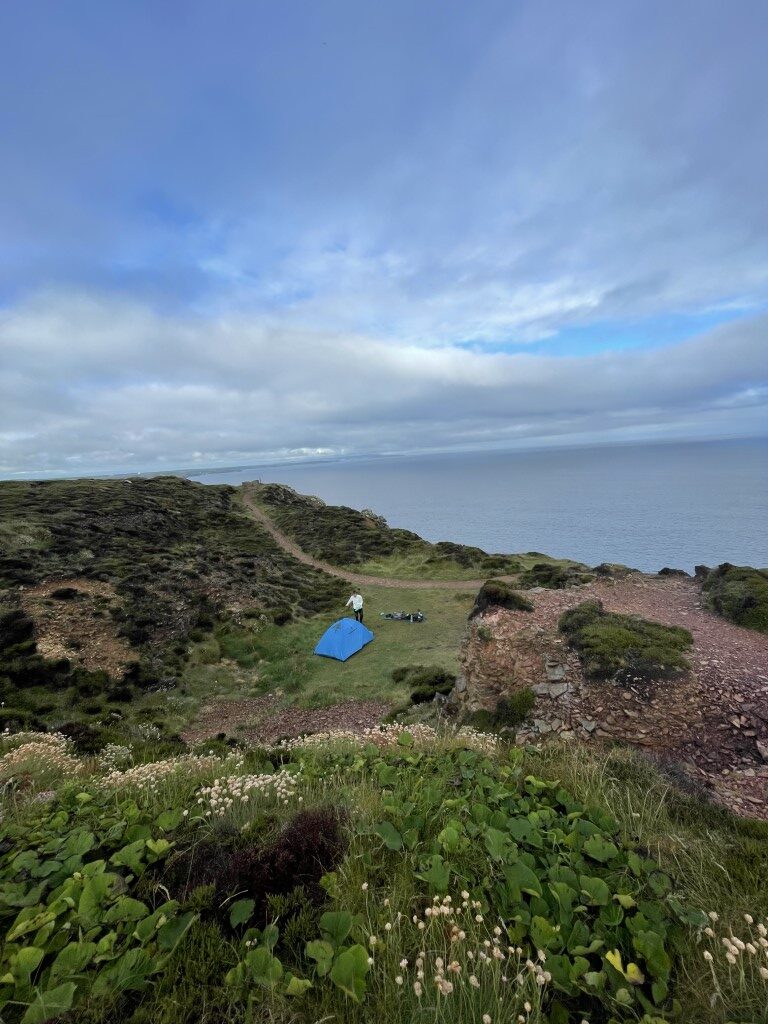
Groceries
In the villages and towns along the South West Coast Path, you’ll frequently encounter chances to buy groceries. These areas typically feature a range of shops, supermarkets, and local stores where you can acquire food and supplies. Planning your route with these points in mind is wise to guarantee access to essential provisions throughout your journey. It’s worth noting that store availability and product variety may differ, so checking in advance or consulting locals as you travel the South West Coast Path can be beneficial. Taking the weight into consideration, we opted to shop for a maximum of two days. When ample supplies were available, we chose to shop daily.
Opportunities for water refilling are available at public restrooms along the route. To ensure we had an ample supply, we carried enough water for at least one and a half days, with additional reserves for cooking. Initially, we tended to carry an excess of water, resulting in heavier backpacks. However, as you progress, you’ll naturally find your rhythm and determine the optimal amount to carry for your needs.
Resume
Embarking on the South West Coast Path was not just a trek, it was a profound immersion into nature’s magnificence and a delightful encounter with warm-hearted individuals along the way. The trail unfolds like a masterpiece, revealing breathtaking coastal landscapes, dramatic cliffs, and serene beaches that leave an indelible mark on the soul.
Being so close to nature brought a sense of tranquility that is hard to describe. The rhythmic sound of waves, the scent of salty sea air, and the rustling of leaves created a symphony that echoed the simplicity and beauty of the natural world. The journey allowed us to disconnect from the hustle of daily life, offering a rare chance to savor moments of quiet reflection.
Despite the initial challenge of lugging heavy backpacks and feeling the strain in our legs, the trail gradually revealed its soothing rhythm. The weight of the backpacks transformed into a symbolic journey of resilience and self-discovery. The satisfaction of conquering each incline was matched only by the rewarding vistas that awaited us at the top.
In the end, our experience on the South West Coast Path was nothing short of transformative. The recommendation echoes with sincerity: for anyone willing to embrace the path, laden with both heavy bags and the promise of awe-inspiring landscapes, this journey is a gift to the soul. It’s an invitation to discover not only the beauty of nature but also the resilience within ourselves. We will be back!
